Hi Aquatic Sentinels!🐬
On this occasion, I want to share very interesting information but in addition to that, you can take this post as 👉an example to be able to write your own.👈
You may realize that, even though the information comes from a scientific text, this post tries to make it more "friendly" for the reader but ALWAYS KEEPS INFORMATION OFFICIAL AND FROM A RELIABLE SOURCE.
At the beginning it is a good idea to mention the author and/or the journal in which it is published (as in this post). Later I could share with you the magazines that you can use for your posts. So, let's talk about starfish⭐️...
🦈🦀🐢🐳🐙 I hope you enjoy it!🐟🦈🦀🐢🐳

Photo by David Clode
📍Cairns Aquarium, Cairns, Australia
What is the first thing you think of when you see a starfish? Maybe you think of their vivid colors, that they are cute or maybe you think that they are slow to move. In general, we always see starfish as "harmless" beings. Have you ever wondered how they feed? because at some point they have to eat!🍴
A research published in the journal ContactoS in 2002 by Laura Georgina Calva B. (Coastal Ecosystems Laboratory, Hydrobiology Department. D.C.B.S. UAM)

The "kingdom" of the starfish⭐️
What would the animal kingdom be without taxonomy? Thanks to the taxonomic levels that exist, we can classify different types of animals taking into account their similarities. Here we are going to talk about the phylum Echinodermata, it includes the Asteroids (starfish), Ophiuroids (star snakes), Echinoids (sea urchins), holothuroids (sea cucumbers) and the Crinoids (sea lilies); but without a doubt the stars are the ones that have mainly been become symbols of marine life.
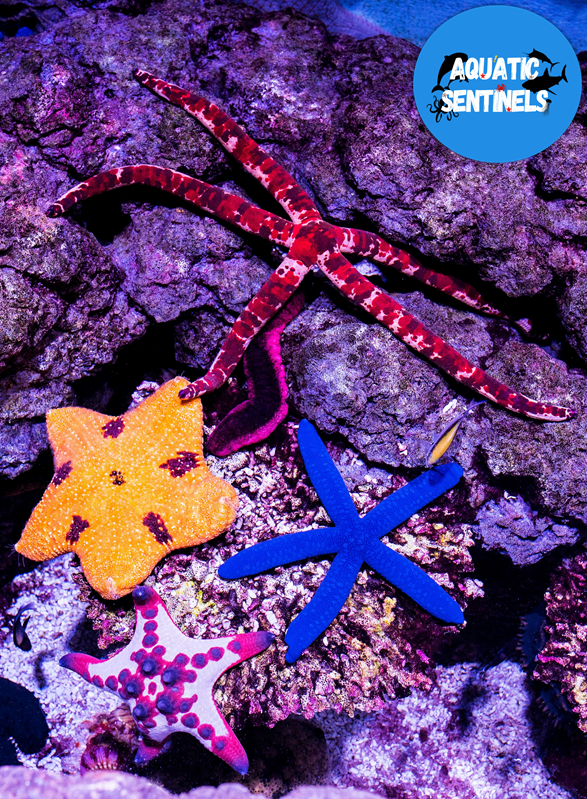
Photo by David Clode
📍Cairns Aquarium, Cairns, Australia
These species comprise a large part of the marine fauna, biologically they are interesting and have a great ecological importance, however, until 2002, worldwide, echinoderms were not so studied because their commercial importance was perhaps as relevant as fish or some mollusks. But the sea stars are the exception, since the attention will be on them, unlike the serpent stars or the sea cucumbers.

Starfish are effective predators!👌
Sea stars live in the benthos, that is, in the area of the seabed and are well known because they are voracious predators in this area, that is why they have been successful and we can see them in almost any ocean in the world. Much of this success is due to the fact that they have different types of eating habits, because their digestive structures have outstanding adaptations.
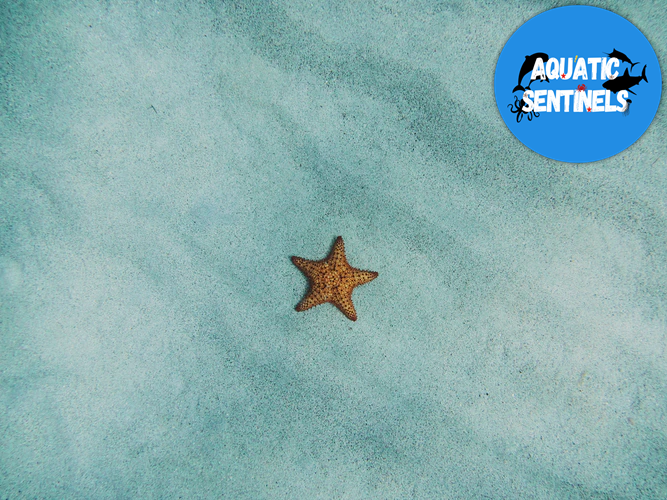
Photo by Amy Humphries📸
📍Guantánamo Bay
The eating habits of starfish have been studied by several researchers such as Hyman (1955), Nichols (1964), Binyon (1972), Sloan (1980) and Jangoux and Lawrence (1982), this study makes a compilation of these habits...

The eating habits of starfish
It is important to know that the vast majority of studies on sea stars have been carried out thanks to aquariums, where a large number of them are housed. To learn about the feeding of these animals it was necessary to make an analysis of the content of the stomachs of the starfish...
1. The technique of sticking out the stomach?!😱
That's right, starfish have the strange technique of pulling out their stomach to feed when they are in the marine benthos, they feed on microorganisms and organic material found there (detritus). Their stomachs function as feeding organs with muco-cilia that extract their food from the sand!
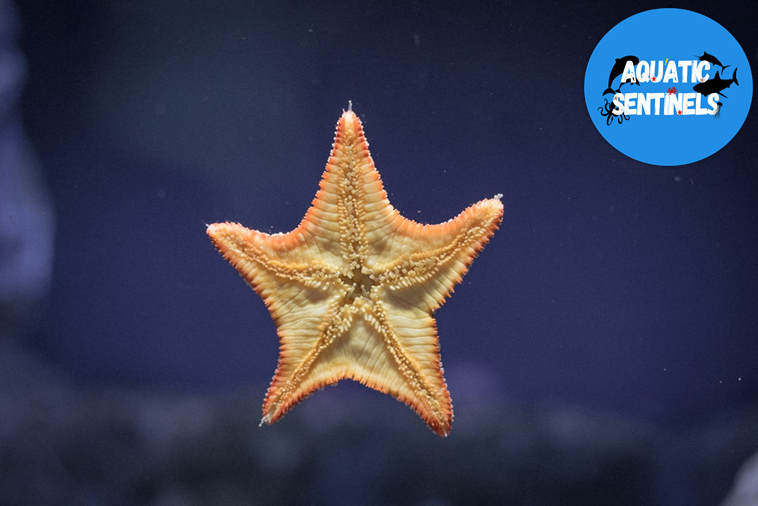
Photo by Matthes Trettin📸
📍Germany
The adaptations of the stomach of the stars is something fascinating, since they not only feed on soft sand, they can also do so on hard substrates such as rocks, this evolution is undoubtedly remarkable and thanks to this the stars have colonized the substrates hard.
2. The technique of digging in the sand?!😱
To disprove the myth that some think that sea stars do not move there are some species of Luidia sp., Which live more or less hidden in the sand. They feed on mollusks such as oysters, clams, mussels, etc. the ones they catch digging down into the sand! forming shallow holes.
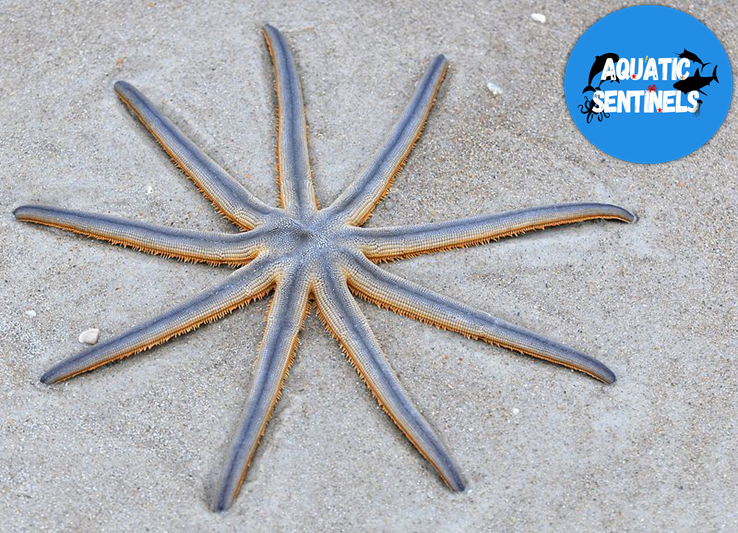
Photo by Andrea Westmoreland📸 Nine-armed Sea Star (Luidia senegalensis)
📍DeLand, United States
To bury themselves they move laterally on both sides of each arm, then the animal sinks vertically down into the formed cavity and catches its prey, amazing! The case of the species L. sarsii has even been published, which buries itself in the sand and then waits for its prey to later capture it.
3. The technique of self-regeneration!😱
Perhaps the fact that stars can self-regenerate is not merely a feeding technique, but this phenomenon greatly enhances colonization success.

Photo by Juan Bacab G.📸
📍"Las perlas" beach, Cancún, México
Stars are well known for regenerating their arms when they lose them due to various causes, one of them being predators. There are many specimens that survive the amputation of their arms, for example, approximately 60% of the population of L. clathrata that lives in Florida, have the ability to regenerate one or more arms, only if an arm is lost just before from the breeding season, the reproductive potential of the species can be reduced.

The feeding habits of snake stars🐍⭐️
1. The technique of eating with their arms😱
The eating habits and type of food of these organisms have so far not been well studied (2002), however, it is possible to make some generalizations. For example, two main types of feeding methods are grouped together. Some families of ophiuros (snake stars) are predators and carrion eaters, they usually have quite a few small spines and podiums on their arms and hold their food by turning the arm. A common accessory method is tank feeding, in which small particles are picked up from the substrate by means of these podiums.
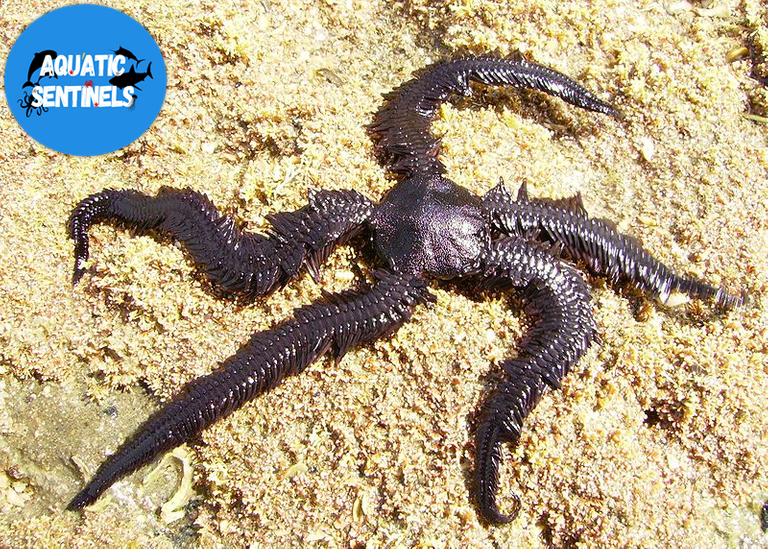
Photo by GrahamBould📸
📍 Whangaparaoa, near Auckland, New Zealand
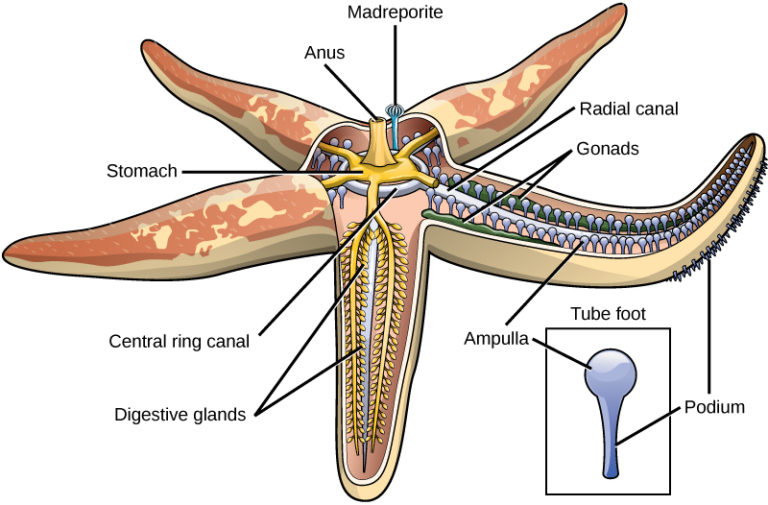
Diagram presented by Lumen learning courses👈
2. The enveloping mucus technique😱
Some species of snake stars have glands that produce mucus, this is found precisely in the spines and podiums of the snake stars, the mucus can vary with respect to the properties and functions that are given to it.
Here the interesting thing is to know that the particles on which the star-snakes feed stick to this mocus by adhesion, the mucus is responsible for making these species super sticky.
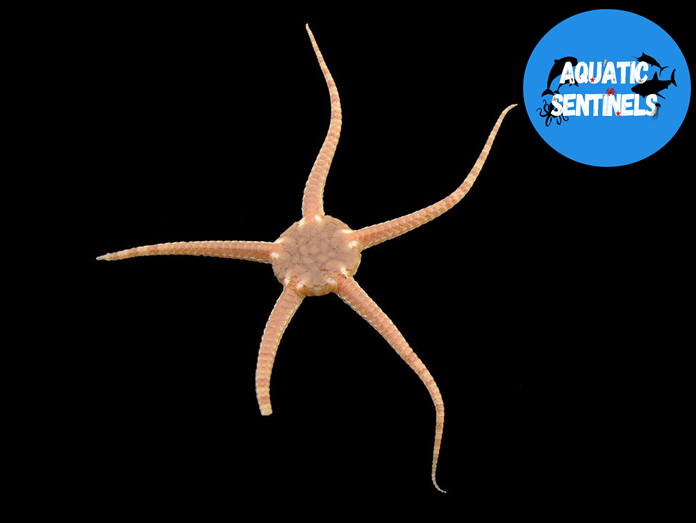
Photo by Hans Hillewaert📸
📍Unknown

👉Join the Aquatic Sentinels!🐋
This project is dedicated to the preservation of our sea, our rivers and lakes, our lagoons. Let's make it possible! Let's share scientific and quality information for the good of our aquatic world!

🐟🐋Welcome!🐬🐙

DNA - Densifying Nature-Appreciation :

DNA is an organization to foster and DENSIFY NATURE-APPRECIATION which aims to establish REPORTS OF BIODIVERSITY DATA that is contributed by all of us Hiveans and subsequently cataloged.

DNA animation GIF by @Suheri
Therefore DNA searches for HIGH-QUALITY posts that aim to DESCRIBE and determine the BIODIVERSITY AROUND YOU with added EXPLANATIONS and INFORMATION. For these informative posts they offer a CURATION SERVICE using the @dna.org account. It is also a CURATION TRAIL. Just add the #dna TAG if you think that any of your posts is what they are looking for.

Aquatic Sentinels animation GIF by @juanbg
I didn't know that they occur in this huuuge variety of shapes and can look so different ^^ .. This self-regeneration is awesome 😁
Self-regeneration is amazing! Many topics of starfish are known for everyone, but the techniques to feed are interesting too
My favorite shape and animal if this could be it would be my starsighn
I love the share
Great weekend friend
Thanks @brittandjosie😁 definitely one of the most iconic animals in the marine environment!
Everybody enjoy in these, from kids to adults. Underwater world is so awesome!
Totally agree! Greetings @crazy-andy😁👍
Congratulations @juanbg! You have completed the following achievement on the Hive blockchain and have been rewarded with new badge(s) :
Your next target is to reach 3750 upvotes.
You can view your badges on your board and compare yourself to others in the Ranking
If you no longer want to receive notifications, reply to this comment with the word
STOP